The poetic dance "The Painting Journey – The Legend of a Panorama of Mountains and Rivers" started touring recently. One of the dance excerpts was shown at the Spring Festival Gala in 2022. Behind this is a designer named Yang Donglin, the chief costume designer at the China National Opera and Dance Drama Theatre.
03:08
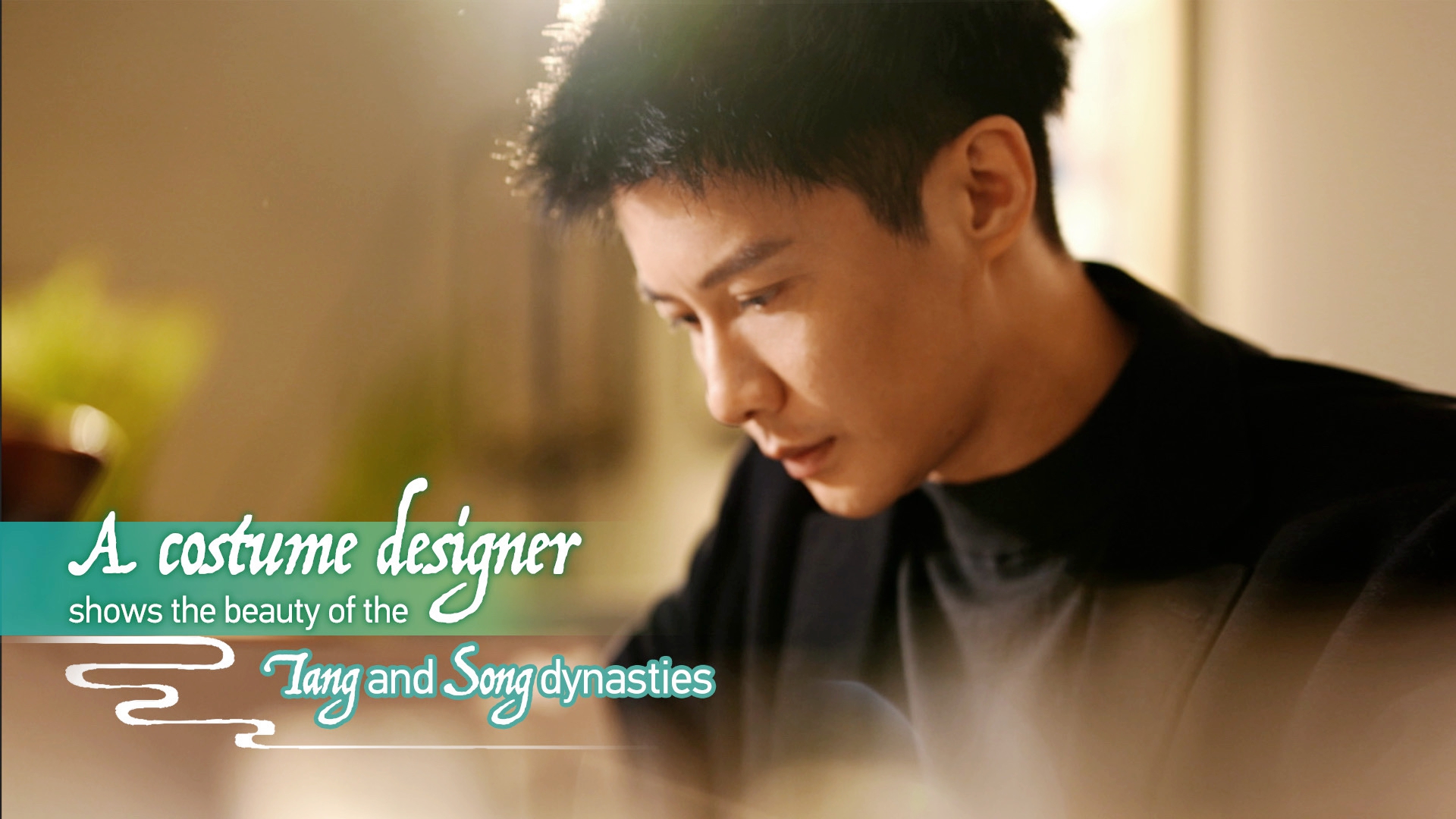
With the advancement of landscape painting during the Song Dynasty, Chinese painting attained a new level of sophistication. The painting style known as "shan shui" – "shan" standing for mountain and "shui" for the river – became well known in Chinese landscape art.
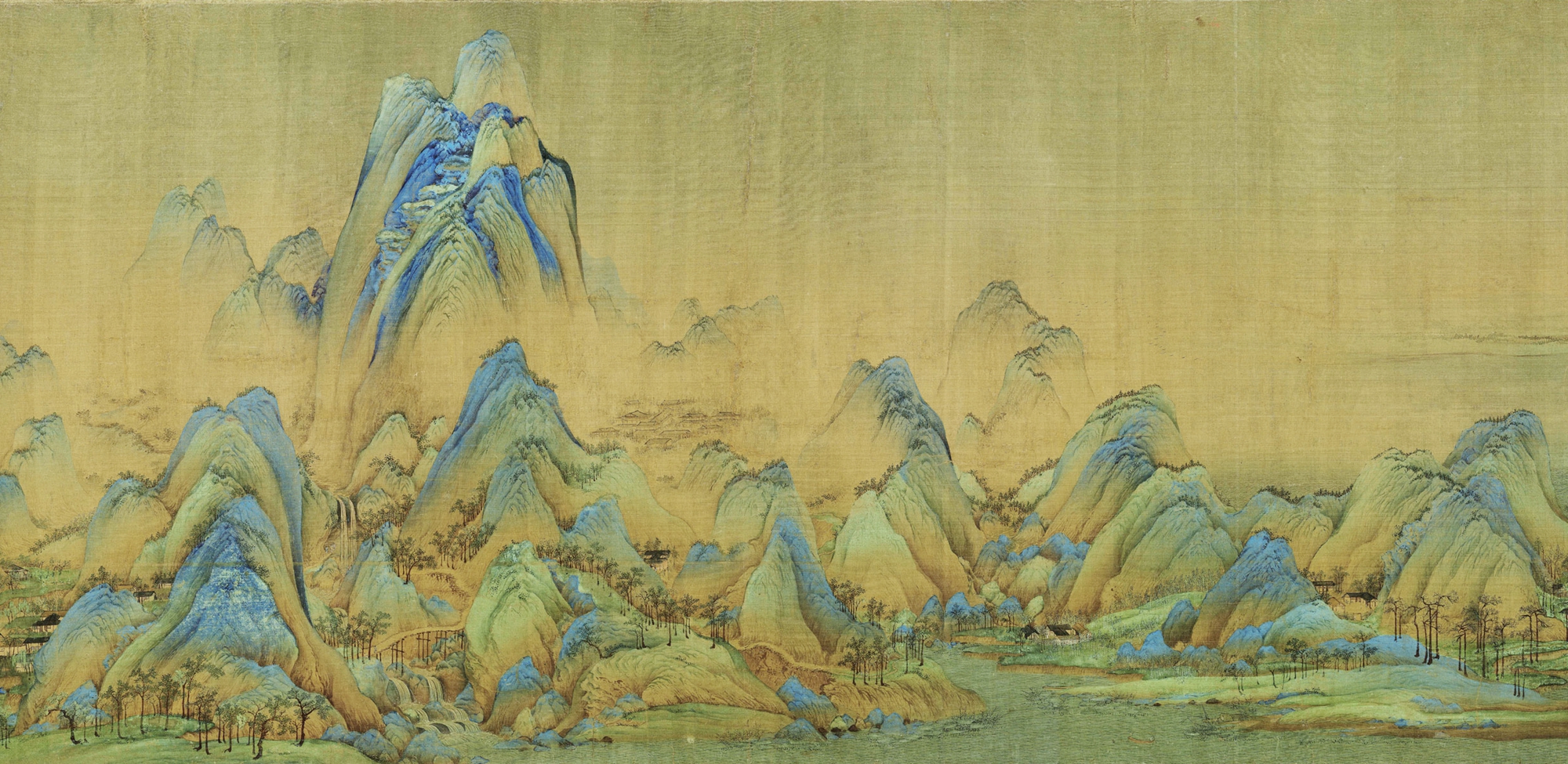
The painting "A Panorama of Rivers and Mountains" by Wang Ximeng /CGTN
The painting "A Panorama of Rivers and Mountains" by Wang Ximeng /CGTN
"A Panorama of Rivers and Mountains" is a masterpiece by Wang Ximeng, an ancient painter who lived during China's Northern Song Dynasty (960-1127). The poetic dance "The Painting Journey – The Legend of a Panorama of Mountains and Rivers" is inspired by his painting and uses various artistic techniques to transform the imagery of the landscape into dance art.
As their movements change, the dancers resemble mountains and rivers. Such stunning images are underpinned by strong costume design. Yang Donglin said his team used mineral green and blue as the base colors to make the dancers' sleeves look like rolling mountains when stacked together.
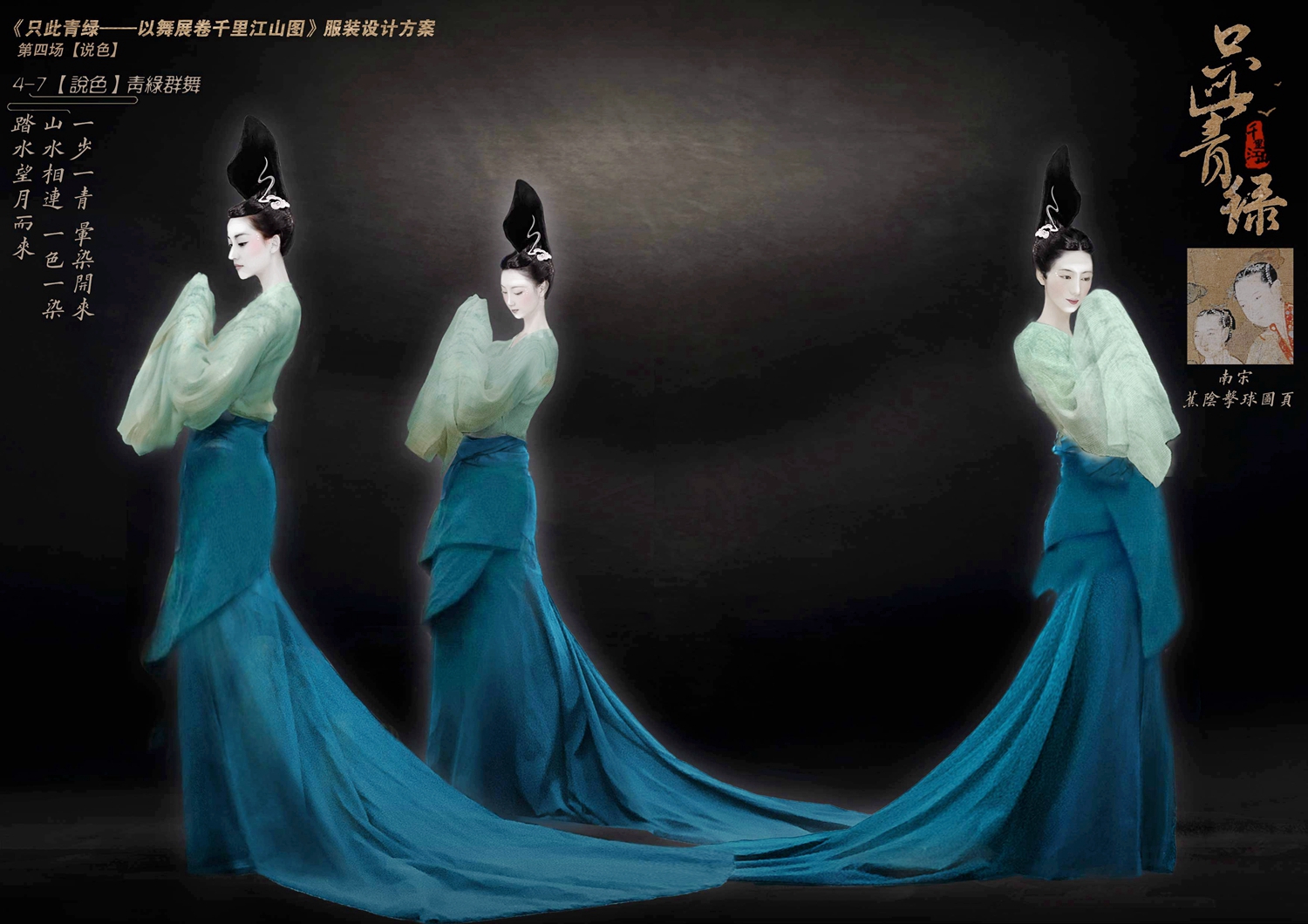
A design manuscript of the poetic dance "The Painting Journey – The Legend of a Panorama of Mountains and Rivers" /Courtesy of Yang Donglin
A design manuscript of the poetic dance "The Painting Journey – The Legend of a Panorama of Mountains and Rivers" /Courtesy of Yang Donglin
The poetic dance bears a strong Chinese aesthetic, so it is more elaborate in terms of fabrics and colors. "We also chose the traditional Chinese ramie fabric. When you look at the costumes up close, the folds of the dress resemble 'a thousand-mile ravine.' There are both deep and shallow areas, which create a unique charm," said Yang. Ramie is a fresh and resistant fabric, which can last a long time, and the colors won't fade as much, even with severe sun exposure.
Clothing was generally more conservative during the Song Dynasty (960-1279). The designer said that in order to give the audience a better sense of traditional Chinese beauty, the team continued to study traditional Chinese culture and deconstruct its clothing aesthetics.
Yang discovered that people in this era dressed in a way that mirrored the more simple aesthetics of the Song Dynasty, and this transformation is the result of the cultural revival. The most noticeable feature of the Song Dynasty is the parallel straight collars with side slits. The sleeves can be wide or narrow, and the length can be to the knees and ankles. Also, the colors are usually pure and less bright, representing the Song people's different aesthetics of simplicity, calmness, and elegance.
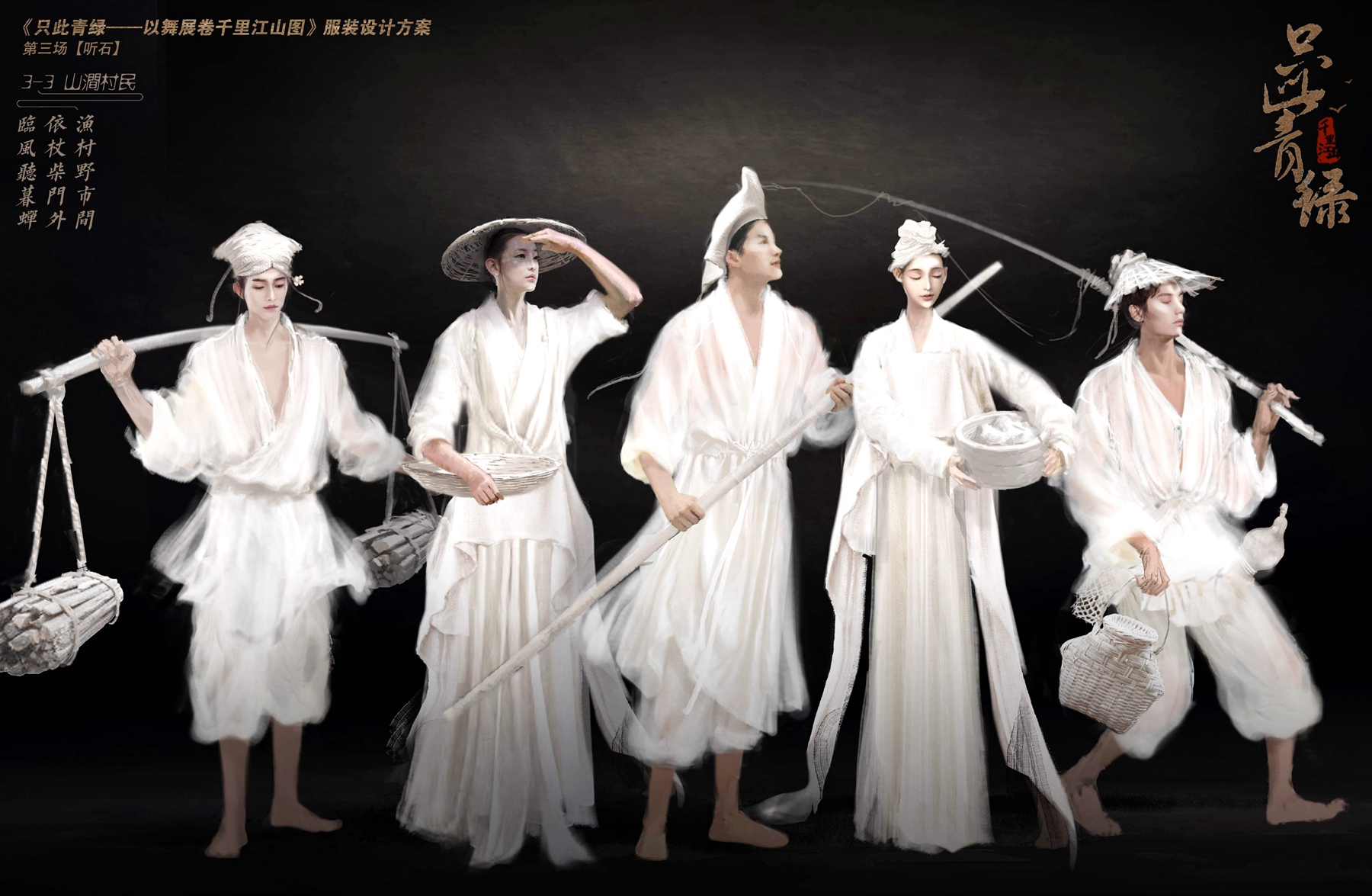
A design manuscript of the poetic dance "The Painting Journey – The Legend of a Panorama of Mountains and Rivers" /Courtesy of Yang Donglin
A design manuscript of the poetic dance "The Painting Journey – The Legend of a Panorama of Mountains and Rivers" /Courtesy of Yang Donglin
In contrast, the fashion and aesthetics popular during the Tang Dynasty (618-907) reflected the economic prosperity of that period, with more attractive styles, gorgeous colors and elaborate patterns, Yang explained.
Women's attire from the Tang Dynasty is distinctive. This is due to the fact that individuals freely pursue their unique preferences and exquisite beauty. Also, such aesthetics profit from the extremely liberal mindset and cultural setting, which significantly lessens the constraints on women. Women have greater leeway in their clothing choices, allowing them to express their unique personalities by showcasing their bodies or dressing.
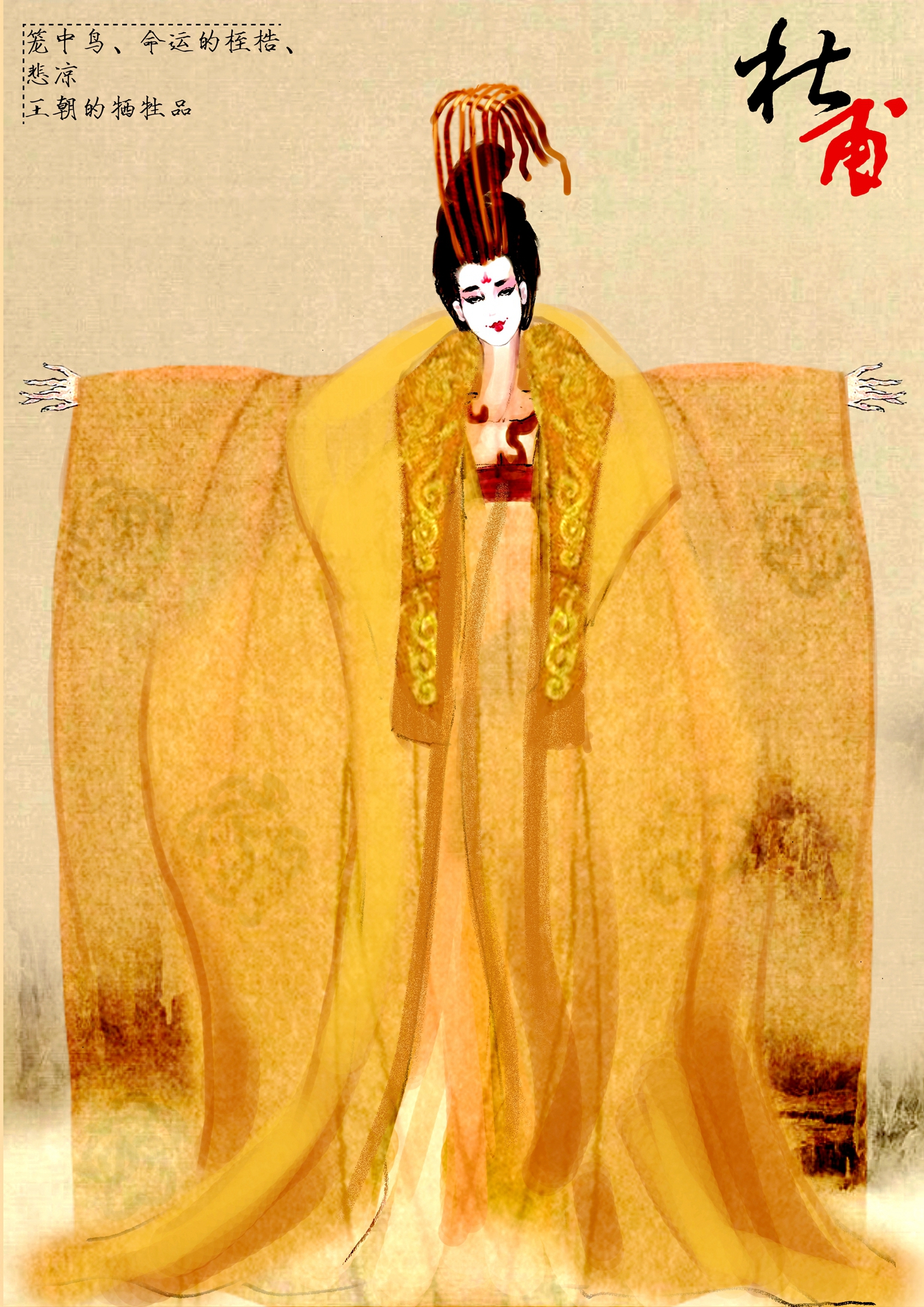
A design manuscript of "Satire on Fair Ladies," an excerpt from the dance drama "Du Fu" /Courtesy of Yang Donglin
A design manuscript of "Satire on Fair Ladies," an excerpt from the dance drama "Du Fu" /Courtesy of Yang Donglin
"Satire on Fair Ladies" is an excerpt from the dance drama "Du Fu." This dance drama is based on a poem by Du Fu that shows the ladies on a trip in spring. They are dressed in gorgeous costumes and enjoy glory and wealth. But in fact, the story takes place at the end of the Tang Dynasty, a period that the regime was about to collapse. Therefore, Yang chose a fabric as fragile as paper to show the turbulence of that era.
"Each of the ladies has a fascinating face, their skin is delicate, their manner full of grace. Embroidered with peacocks and unicorns in gold, their dress in rich silks shines so bright when spring is old," reads a Chinese poem by Du Fu. This poem reveals the scandal of the rulers by describing the excursions of the beautiful ladies.
"Du Fu was a famous poet in the Tang Dynasty. His poems also have a strong sense of realism, so we used a paper-like fabric to convey that. This fabric is very thin and easily broken, which expresses the fragile character of this era," Yang added. The fragile paper also resembles these ladies, who have no idea of the coming turmoil.
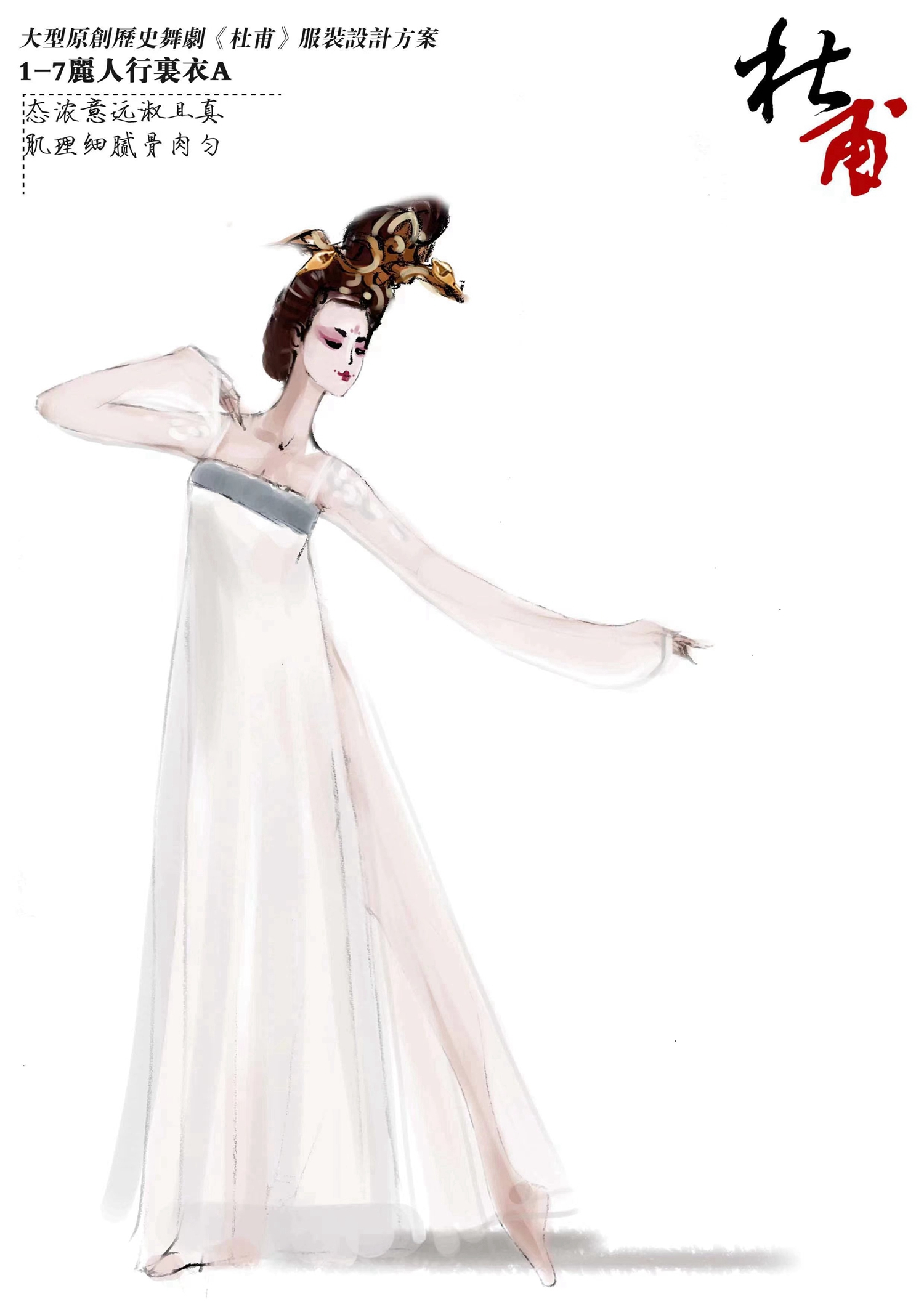
A design manuscript of "Satire on Fair Ladies," an excerpt from the dance drama "Du Fu" /Courtesy of Yang Donglin
A design manuscript of "Satire on Fair Ladies," an excerpt from the dance drama "Du Fu" /Courtesy of Yang Donglin
When designing the costumes, Yang frequented numerous museums with his team, looking for features of that historical period to provide inspiration for the clothing and food worn and consumed by the various characters. But there was also creative interpretation involved to some extent. "We take historical facts into consideration and also add some innovation to our designs," he said.
Yang believes that costumes are designed for a specific time and character to cover up and convey a belief to the audience. "Clothes are a representation of culture worn on our body. What we were looking for is the essence of traditional culture," Yang said.
He also felt that clothes witnessed the process of our humanity, especially in China. Traditional Chinese culture has a long history of 5,000 years, and clothing carries the memory and heritage of human beings. "I hope these artworks that are full of traditional Chinese culture can be widely shared so that everyone can feel the beauty of our culture," Yang added.
Videographer: Gao Peng
Video editor: Yu Rong
Script: Yu Rong
Cover image designer: Yu Peng